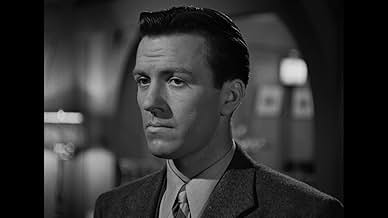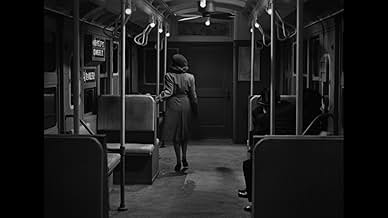NOTE IMDb
6,7/10
8,4 k
MA NOTE
Ajouter une intrigue dans votre langueA woman in search of her missing sister uncovers a Satanic cult in New York's Greenwich Village and finds that they could have something to do with her sibling's random disappearance.A woman in search of her missing sister uncovers a Satanic cult in New York's Greenwich Village and finds that they could have something to do with her sibling's random disappearance.A woman in search of her missing sister uncovers a Satanic cult in New York's Greenwich Village and finds that they could have something to do with her sibling's random disappearance.
- Réalisation
- Scénario
- Casting principal
- Récompenses
- 4 nominations au total
Joan Barclay
- Gladys
- (non crédité)
Patti Brill
- Minor Role
- (non crédité)
Wally Brown
- Durk
- (non crédité)
Feodor Chaliapin Jr.
- Leo
- (non crédité)
Wheaton Chambers
- Missing Girl's Father
- (non crédité)
James Conaty
- Party Guest
- (non crédité)
Edith Conrad
- Minor Role
- (non crédité)
Kernan Cripps
- Police Officer Danny
- (non crédité)
Avis à la une
No surprise that Val Lewton was involved with The Seventh Victim, his fingerprints can be seen on every frame. Like Cat People and I Walked With A Zombie, the atmosphere oozes from the screen, although Tournier was not involved here. Young Kim Hunter tries to find her sister, only to find she has fallen into the clutches of a group of Satanists. Oddly, the Satanists are presented as a gentile bunch, no raving lunatics here, they all seem disturbingly sane. There are some magnificent images here. Hunter breaking into her sisters room to find nothing but a chair and a noose, a creepy shower scene that pre-dates Psycho and the extraordinary downbeat ending. A grim little chiller that remains unsettlingly plausible throughout.
As a longtime booster of The Cat People, I tended to give the credit to its director Jacques Tourneur (later to helm Out of the Past). Seeing The Seventh Victim, also from Val Lewton's B-movie unit at RKO, changed all that. It seems Lewton was the resident genius, cobbling together stylish horror/suspense films on shoestring budgets. The young Kim Hunter, away at a private school, learns that her tuition hasn't been paid because her sister, owner of a beauty empire, has disappeared. She leaves school and starts scouring New York's Greenwich Village (also the locale of much of The Cat People) only to uncover a cult of devil worshipers. Lewton's thrillers haven't dated the way James Whale's, for instance, have, possibly because they depend so heavily on suggestion; the literalness of today's "horror" films is completely alien to these suggestive, truly chilling films. The RKO B-movie unit under Lewton was also, probably, a major influence on the look of film noir, soon to become the cutting-edge aesthetic in American movies. This is as tense and satisfying a 75 minutes as you'll find until the Mann/Alton team's seminal noirs of a few years later.
Schoolgirl Kim Hunter (Mary) is called to the office of the Headmistress Ottola Nesmith and told that she can no longer stay on as a pupil as her sister Jean Brooks (Jacqueline) has stopped paying her fees. More than that, Brooks seems to have gone missing. So, Hunter goes off to find her. But Brooks isn't so easy to locate.
This film leaves you with scenes stuck in your mind, so it's good from that perspective. It is also well shot with an eerie atmosphere. Scenes that stand out include the sequence with Hunter and a detective exploring an office at night and the subsequent spooky train ride, a shower scene that will make you think of "Psycho" (1960) and pretty much every scene with Brooks. Fancy a drink? – no thanks but the pressure is on. And how about that ending? Wow, pretty bleak stuff. Especially coming after what had me cringing as we watched God and the Bible being used as a tool to counter Satan and his ways in an extremely simplistic way.
Amo, Amas, Amat, Amamus, Amatis, Amant – remember your Latin from school? The 'ablative absolute' and the 'ut' clause (use the subjunctive). Quamquam. This film also throws in some Latin and I'm glad to hear it. It takes the viewer back to a time sadly long gone as we hear schoolgirls reciting the verb 'Amo' – to love. The day will come when a generation will watch this film and not understand what language it is.
The cast are OK with Jean Brooks standing out. Her look suggests she is leader of the occult movement rather than a victim of it. And all of her scenes are quality – some genuinely scary, and all unworldly because of her appearance. That ending with the neighbour comes as a shock and leaves an eerie memory that will have you thinking about how we view life. It's an interesting film and sad.
This film leaves you with scenes stuck in your mind, so it's good from that perspective. It is also well shot with an eerie atmosphere. Scenes that stand out include the sequence with Hunter and a detective exploring an office at night and the subsequent spooky train ride, a shower scene that will make you think of "Psycho" (1960) and pretty much every scene with Brooks. Fancy a drink? – no thanks but the pressure is on. And how about that ending? Wow, pretty bleak stuff. Especially coming after what had me cringing as we watched God and the Bible being used as a tool to counter Satan and his ways in an extremely simplistic way.
Amo, Amas, Amat, Amamus, Amatis, Amant – remember your Latin from school? The 'ablative absolute' and the 'ut' clause (use the subjunctive). Quamquam. This film also throws in some Latin and I'm glad to hear it. It takes the viewer back to a time sadly long gone as we hear schoolgirls reciting the verb 'Amo' – to love. The day will come when a generation will watch this film and not understand what language it is.
The cast are OK with Jean Brooks standing out. Her look suggests she is leader of the occult movement rather than a victim of it. And all of her scenes are quality – some genuinely scary, and all unworldly because of her appearance. That ending with the neighbour comes as a shock and leaves an eerie memory that will have you thinking about how we view life. It's an interesting film and sad.
THE SEVENTH VICTIM is one of the best films produced by Val Lewton, famous for his wartime series of low budgeted, but brillantly spooky thrillers. A young girl (Kim Hunter) tries to locate her missing sister in Manhattan. In doing so, she uncovers a witch coven. There are so many masterful moments in this classic. In one scene, she is stalked by top-hatted cultists in a deserted subway, in another scene, as she showers, a female cultist confronts her (Shades of PSYCHO?) and there are terrific shocks as an exiled cultist tries to escape the coven. A must for horror fans!
What "The 7th Victim" has going for it is its uniqueness. It certainly is unlike any film from that era that I remember seeing.
This is one of those films that it helps to know nothing about before viewing. To read any sort of capsule about the flick would definitely take away from the enjoyment of the film.
Having said that, I am not totally satisfied with the payoffs the movie provides. There are too many gaps in logic, combined with a bit too much moralizing. Some people find themselves in situations in this film that just simply seem to lack any credibility.
For some fascinating sequences (most notably, one that takes place in a shower and seems to have been seen by Alfred Hitchcock) this film is definitely worth a look-see.
For me, the individual elements of the film was far more interesting than the sum of its parts.
This is one of those films that it helps to know nothing about before viewing. To read any sort of capsule about the flick would definitely take away from the enjoyment of the film.
Having said that, I am not totally satisfied with the payoffs the movie provides. There are too many gaps in logic, combined with a bit too much moralizing. Some people find themselves in situations in this film that just simply seem to lack any credibility.
For some fascinating sequences (most notably, one that takes place in a shower and seems to have been seen by Alfred Hitchcock) this film is definitely worth a look-see.
For me, the individual elements of the film was far more interesting than the sum of its parts.
Le saviez-vous
- AnecdotesErford Gage, who played the poet Jason Hoag, enlisted in the U.S. Army in August 1943 (around the time this film was released) and was killed in action in the Phillipines in March 1945.
- GaffesThe opening text reads: "I run from death, and death meets me as fast, And all my pleasures are like yesterday." The movie attributes the quote to John Donne's Holy Sonnet #7. But it is actually from Holy Sonnet #1.
- Crédits fous[title after starting credits] I runne to death, and death meets me as fast, and all my pleasures are like yesterday. Holy sonnet #VII Jonne Donne
- Versions alternativesExists in a computer-colorized version
- ConnexionsFeatured in Aweful Movies with Deadly Earnest: The Seventh Victim (1967)
- Bandes originalesMay Heaven Forgive You
(uncredited)
From "Martha"
Music by Friedrich von Flotow
Arranged by Roy Webb
[The tune playing on the barrel organ as Mary goes to the Dante for the first time]
Meilleurs choix
Connectez-vous pour évaluer et suivre la liste de favoris afin de recevoir des recommandations personnalisées
Détails
- Date de sortie
- Pays d’origine
- Langues
- Aussi connu sous le nom de
- La séptima víctima
- Lieux de tournage
- Société de production
- Voir plus de crédits d'entreprise sur IMDbPro
- Durée1 heure 11 minutes
- Couleur
- Rapport de forme
- 1.37 : 1
Contribuer à cette page
Suggérer une modification ou ajouter du contenu manquant

Lacune principale
By what name was La Septième Victime (1943) officially released in India in English?
Répondre

































